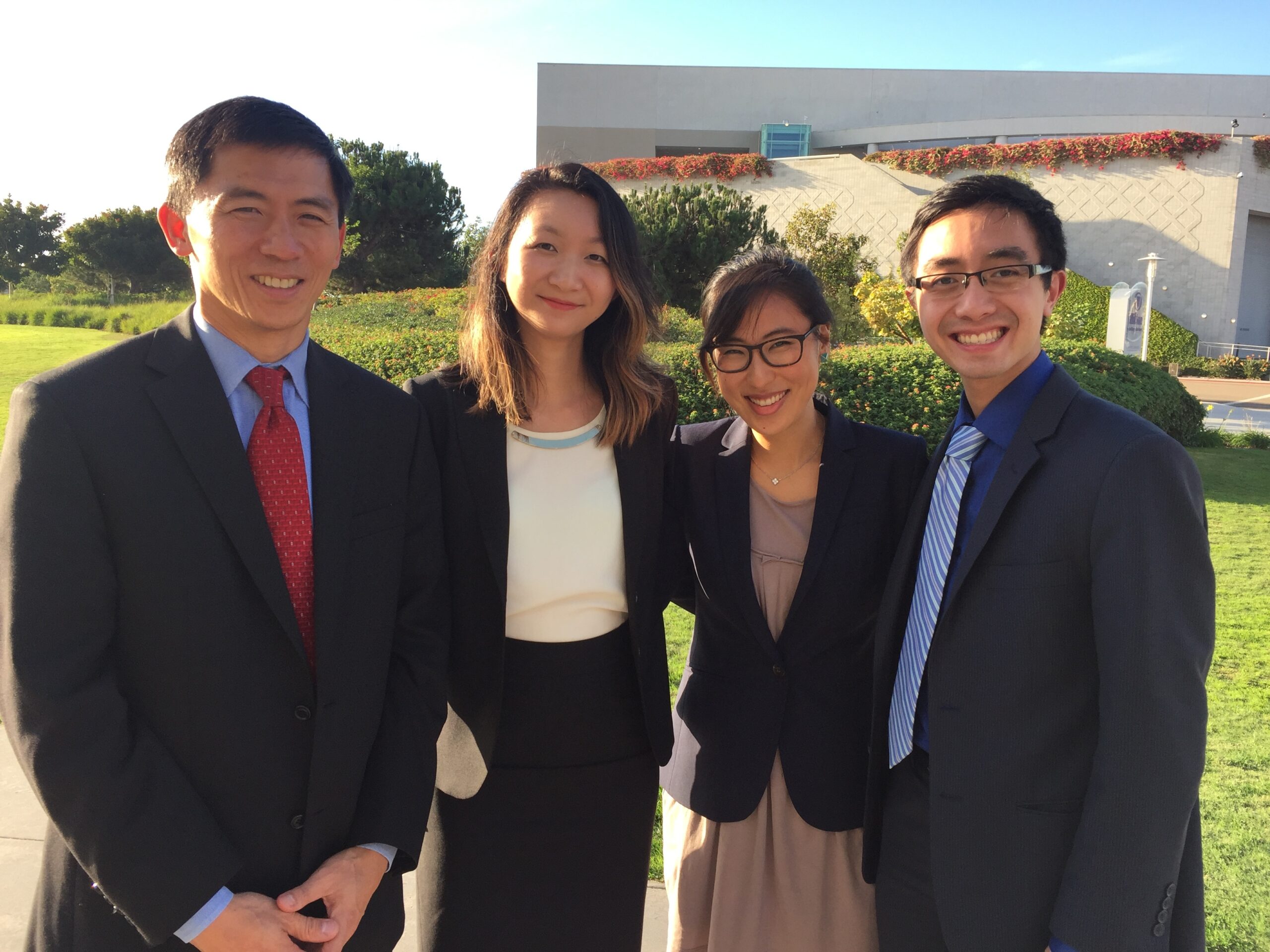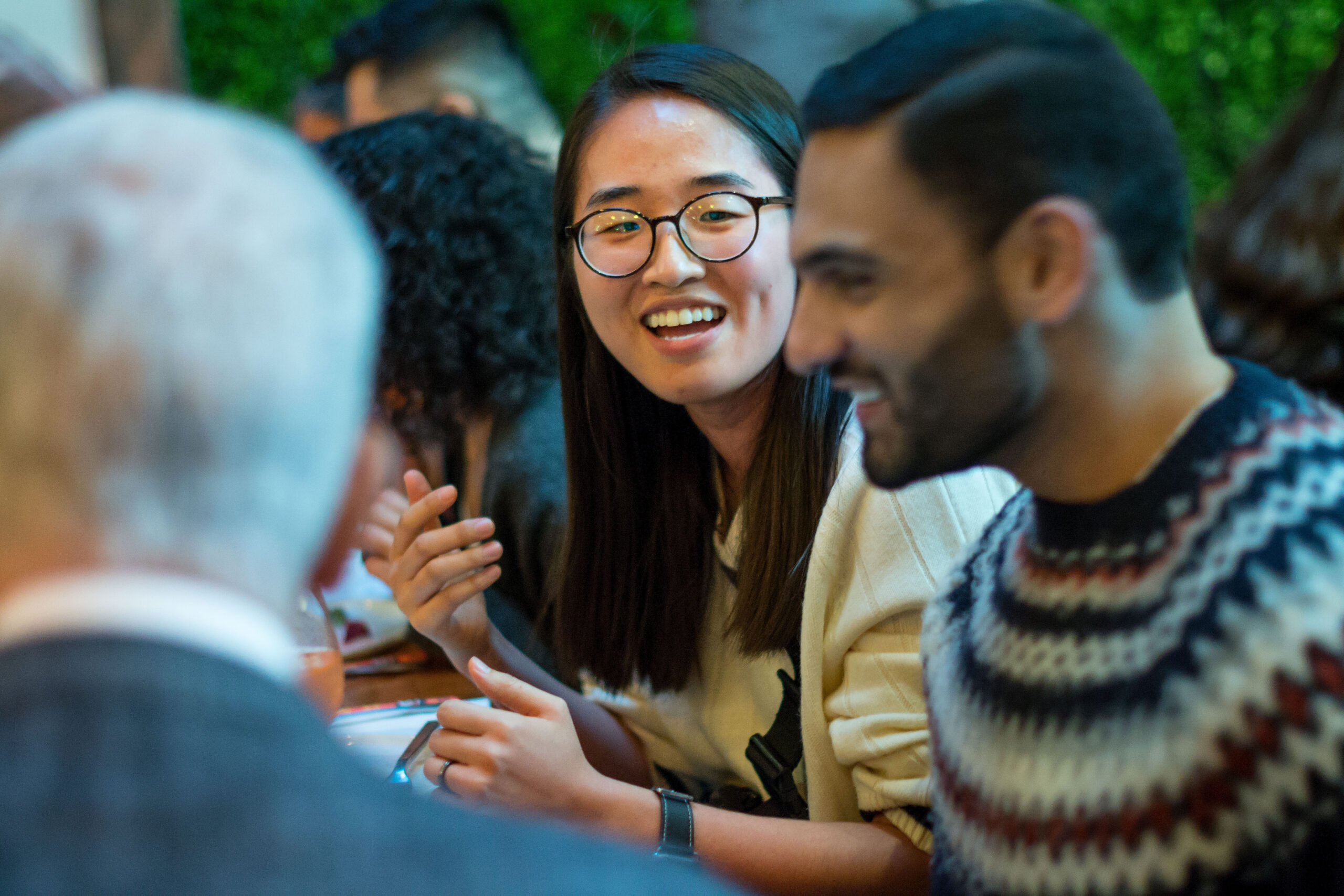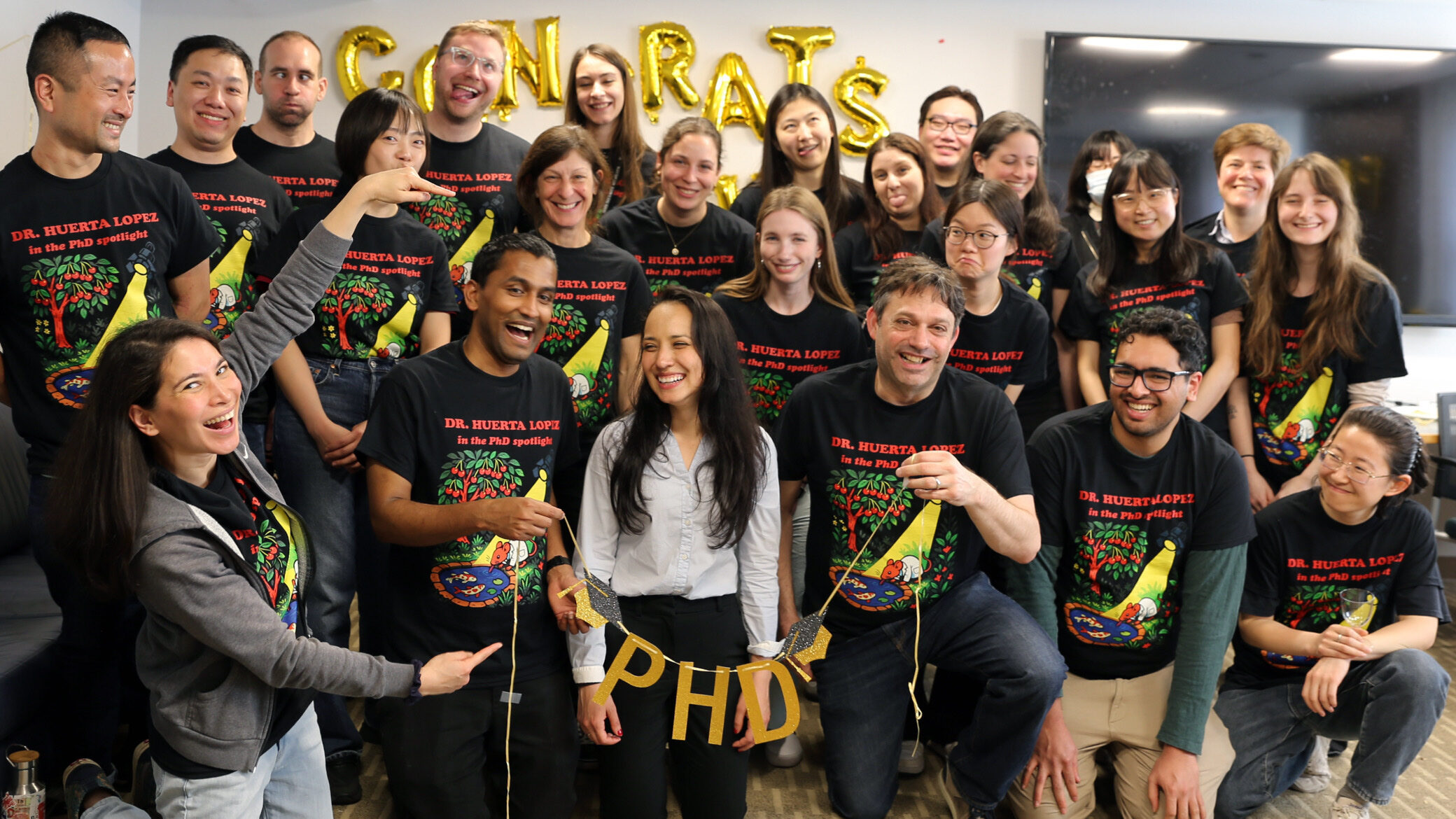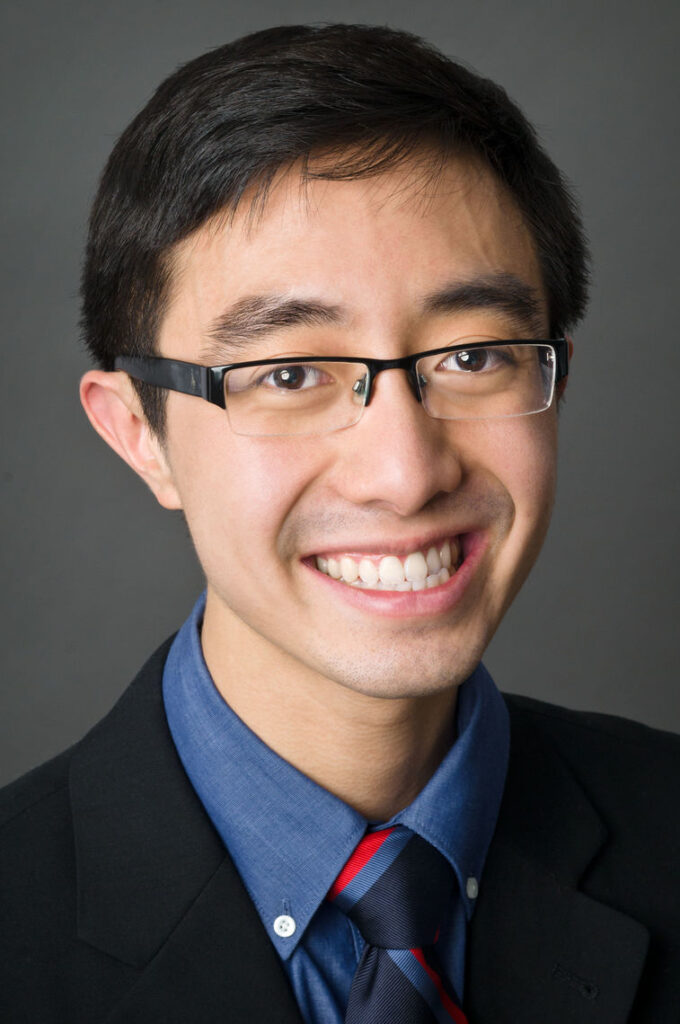- Fellow Highlights
Eric Chung (2016 Fellow) Co-Authors Study on Asian American Progress in the Legal Profession

When Eric Chung, the child of Chinese immigrants, matriculated at Yale Law School in 2014 he was one of the nearly 8,000 Asian Americans who entered law school in the United States that year—the lowest number of Asian Americans to enter law school since 2000.
This recent decrease in Asian Americans in law school, which began after the financial collapse in 2008, marks a reversal of three decades of growth. Between 1983 and 2013, the number of Asian Americans in law school more than quadrupled.
These insights come from a major study, A Portrait of Asian Americans in the Law, which Eric co-authored. The study, which uses data analysis, focus groups, and a national survey, was published by Yale Law School and the National Asian Pacific American Bar Association. Andy Chen (2010 Fellow), and his firm Isometric, brought the study’s findings to life through design.
The goal of the study is to create a baseline for additional research and inquiry into the topic of Asian Americans in the field. The findings open questions for law firms, law schools, and both the non-profit and public sectors as to how Asian Americans are entering, growing, and succeeding within their walls.
We talked with Eric about the study, its findings, and what surprised him most.
The study found that Asian Americans, in comparison to other groups, are disproportionately enrolled in the top 30 law schools ranked by U.S. News & World Report. Yet, the study also found that a small portion of federal judicial law clerks and state law clerks are Asian American. Why do you think that is?
This is a striking trend, and I suspect a number of factors could be at play. One possibility is simply time: Asian Americans are relatively newer to the legal profession, and changes may be gradual. But our findings indicate that the number of Asian American law clerks, as well as for other minority groups, has remained virtually stagnant for over two decades. Another possibility is mentorship, which we found to be positively correlated with whether students obtained a clerkship. Personally, I had never heard of a clerkship before I applied to law school. Recognizing the opportunity and learning how to pursue it highly depended on having supportive mentors. There could also be implicit biases in the type of candidates who are identified and in turn selected for clerkships, and the lack of structure to the hiring process could disproportionately affect Asian Americans and other minority groups. These are just some possibilities, and more research is definitely needed to make a more conclusive determination.
Despite so many Asian Americans attending top tier law schools, you found that a small minority of Asian Americans (eleven percent), were motivated to attend law school to become influential and an even smaller percent were motivated by an interest in politics. Is this something law schools can work to address?
Absolutely. Law schools serve a crucial role in honing the interests and skills of law students, and realizing that students come to law school with different backgrounds and motivations is so important to develop effective advising and teaching. Some students will have already met many lawyers in their lifetime, and they may know exactly what law school is like and what it can do for them. But many students do not, and like other immigrants and minority groups, Asian Americans may be particularly prone to having only seen a few perspectives of legal careers, if any at all. A career in politics, and the public sector more generally, may seem so distant when they have relatively fewer role models to look to, and when the pathways appear less structured and more risky than other legal jobs. Having law schools provide a variety of perspectives and guidance on how to pursue such a career is therefore key.
What was the origin of this study? How did it come to be?
Our study started as a panel conversation at Yale Law School during the spring of 2015. Justice Goodwin Liu engaged members of the Asian Pacific American Law Students Association in an open-ended discussion about our experiences in the law, and many students perceived a persistent underrepresentation of Asian American lawyers in government and the public service jobs. As we tried to describe the extent of this underrepresentation and potential causes, we quickly realized that we simply did not know the numbers or have enough perspectives to draw conclusions. With Justice Liu’s guidance, we rallied a team to begin embarking on a comprehensive inquiry, which evolved into this study to inform that initial conversation, the many ones since, and hopefully the many more to come.
Why did you decide to get involved?
My journey into the legal profession has often come with a sense of foreignness, which I think has several layers. First, there is the layer that comes from being the first in my family and one of very few in my community to go to law school. Growing up, I never met any lawyers, and deciding to go to law school was unfamiliar and challenging. These challenges exist for many first generation professionals and are not unique to Asian Americans. They are compounded, however, with additional layers of being an immigrant and one of only a few Asian Americans in a profession that can depend highly on status and networks. These obstacles are often readily noticeable but difficult to articulate, and I wanted to help bring into words and numbers what I, and many of my Asian American colleagues, have sensed for a long time. We have already heard from so many Asian American lawyers who told us that they have been trying to express these challenges but often find it difficult without the broader story; I’m honored to share this study as a first attempt at hopefully situating that broader story.
What was the most surprising finding to you?
I was particularly struck by the relative dearth of Asian Americans in virtually every leadership position within both the public and private sector relative to their numbers in law schools and entry-level positions. Relatedly, I was struck by the sheer difference in traits that our survey respondents identified as being associated with Asian Americans: more than three times as many respondents identified being perceived as hard-working, responsible, logical, or careful compared to empathetic, creative, assertive, or extroverted. More research is needed to determine just how significant or unique these findings are to Asian Americans, but just within this group, they highlight a considerable magnitude of difference in perceptions, and our focus group interviews corroborate that this could be widespread and systemic.
The study found that Asian American females experience more overt and implicit discrimination on the basis of race than Asian American males do. It also found that Asian American women outnumber Asian American men at the associate level at law firms, however, similar to all other groups, there are more than double the number of Asian American men than women at the partner level. At the same rate, there seemed to be some positive recent trends regarding Asian American women in the law. What was your biggest takeaway from the study regarding gender?
Returning to the idea that there can be several layers of foreignness when navigating the legal profession, our study identifies that gender is yet another possible layer that could be intertwined with Asian American identities and warrants further study. In our survey results, women on average reported higher levels of overt and implicit discrimination in the workplace. These findings could reflect a complex intersectionality of traits, where some experiences are unique to Asian Americans in the law, and further factors are unique to Asian American women in the law. The trick of any broad-based study is to cast a wide enough net while trying to identify possible distinct experiences within sub-groups. We hope further research can continue to widen and focus the scope of study to look at differences by gender among other sub-groups within the vastly diverse group composing Asian Americans in the law.
In retrospect, is there a question you would add to the national survey that you disseminated?
Yes, many! An exciting and challenging part of this type of research is that there is never enough room in a survey to capture every dimension, and new questions always come up as findings start to come in. As one example, a question about reactions to current economic, social, and political developments in society could have been interesting. On the one hand, we are dealing with decades of history that have mostly been overlooked, so an important step has been just to document the advent of Asian Americans into the law. On the other hand, the world is quickly changing, and some of the considerations in 2000 may be different than those during the economic recession and today. How have these developments influenced Asian American perceptions of the legal profession and of their standing within it? ∎
Marquee Photo: Co-authors of the study. From left to right, California Supreme Court Justice Goodwin Liu, Yale Law School graduates Xiaonan April Hu, Christine Kwon and Eric Chung.
Keep Exploring
-
 Read more: Kathy Ku Steps into Leadership as PDSFA Chair
Read more: Kathy Ku Steps into Leadership as PDSFA Chair- Board of Directors
- Fellowship News
Kathy Ku Steps into Leadership as PDSFA Chair
-
 Read more: Q&A with MD/PhD Student Silvia Huerta Lopez
Read more: Q&A with MD/PhD Student Silvia Huerta LopezQ&A with MD/PhD Student Silvia Huerta Lopez
-
 Read more: PD Soros Eligibility Guide for PhD Applicants
Read more: PD Soros Eligibility Guide for PhD Applicants- Applicant Information
PD Soros Eligibility Guide for PhD Applicants
-
 Read more: Watch: Optional Exhibits & Recommendations
Read more: Watch: Optional Exhibits & Recommendations- 2025 Information Sessions
Watch: Optional Exhibits & Recommendations
